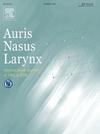自动复位椅治疗难治性良性阵发性位置性眩晕的疗效研究
IF 1.5
4区 医学
Q2 OTORHINOLARYNGOLOGY
引用次数: 0
摘要
目的本研究的目的是确定自动导管复位椅联合视频震图(VNG)治疗顽固性良性阵发性位置性眩晕(BPPV)患者的总体成功率,这些患者最初采用常规的导管复位术(CRM)治疗失败,以及是否可以成为一种简单的CRM解决方案,并在BPPV亚型之间治疗成功的差异。方法前瞻性研究96例于2022年12月至2023年12月在初级卫生保健中心进行首次CRM后诊断为难治性良性阵发性定位性眩晕的患者,于2022年12月至2023年12月在某三级大学医院采用RMS™联合VNG作为自动复位椅进行治疗。如果患者在一个月内三次或更少的疗程后表现出缓解,则认为治疗成功。结果平均治疗次数为1.42次,成功率为96.9%。2根水平管和1根多管BPPV在1个月内需要3次以上的治疗,治疗失败率为3.1%(定义为1个月内需要3次)。结论rms™作为一种自动复位椅,可被认为是一种有效的复位椅,用于治疗传统的管伴复位操作抵抗患者,成功率可达97%。本文章由计算机程序翻译,如有差异,请以英文原文为准。
The efficacy of automated repositioning chair in refractory benign paroxysmal positional vertigo-a pilot study
Objective
The objective of this study was to determine the overall success rate of automated canalith repositioning chair combined with videonystagmography (VNG) in the treatment of refractory benign paroxysmal positional vertigo (BPPV) patients who were initially treated unsuccessfully with conventionally performed canalith repositioning maneuvers (CRM) and whether can be a solution to enable easy CRM and make a difference in treatment success among BPPV subtypes.
Methods
Prospective study with 96 patients diagnosed with refractory benign paroxysmal positioning vertigo after initial CRM at primary health care centers between December 2022 and 2023 were treated by means of RMS™ combined with VNG as an automated repositioning chair at a tertiary university hospital in between December 2022 and 2023. Patients were deemed successfully treated if they displayed remission after three or less sessions within the span of a month.
Results
The mean number of required treatments was 1.42 with a success rate of 96.9%. Two horizontal canal and one multicanal BPPV needed more than three treatment sessions in one month span with 3.1 % treatment failure rate (defined as a need of >3 sessions in one month)
Conclusion
RMS™ as an automated repositioning chair can be considered as an effective repositioning chair in the treatment of conventionally performed canalith repositioning maneuver resistant patients with success rates reaching 97 %.
求助全文
通过发布文献求助,成功后即可免费获取论文全文。
去求助
来源期刊

Auris Nasus Larynx
医学-耳鼻喉科学
CiteScore
3.40
自引率
5.90%
发文量
169
审稿时长
30 days
期刊介绍:
The international journal Auris Nasus Larynx provides the opportunity for rapid, carefully reviewed publications concerning the fundamental and clinical aspects of otorhinolaryngology and related fields. This includes otology, neurotology, bronchoesophagology, laryngology, rhinology, allergology, head and neck medicine and oncologic surgery, maxillofacial and plastic surgery, audiology, speech science.
Original papers, short communications and original case reports can be submitted. Reviews on recent developments are invited regularly and Letters to the Editor commenting on papers or any aspect of Auris Nasus Larynx are welcomed.
Founded in 1973 and previously published by the Society for Promotion of International Otorhinolaryngology, the journal is now the official English-language journal of the Oto-Rhino-Laryngological Society of Japan, Inc. The aim of its new international Editorial Board is to make Auris Nasus Larynx an international forum for high quality research and clinical sciences.
 求助内容:
求助内容: 应助结果提醒方式:
应助结果提醒方式:


